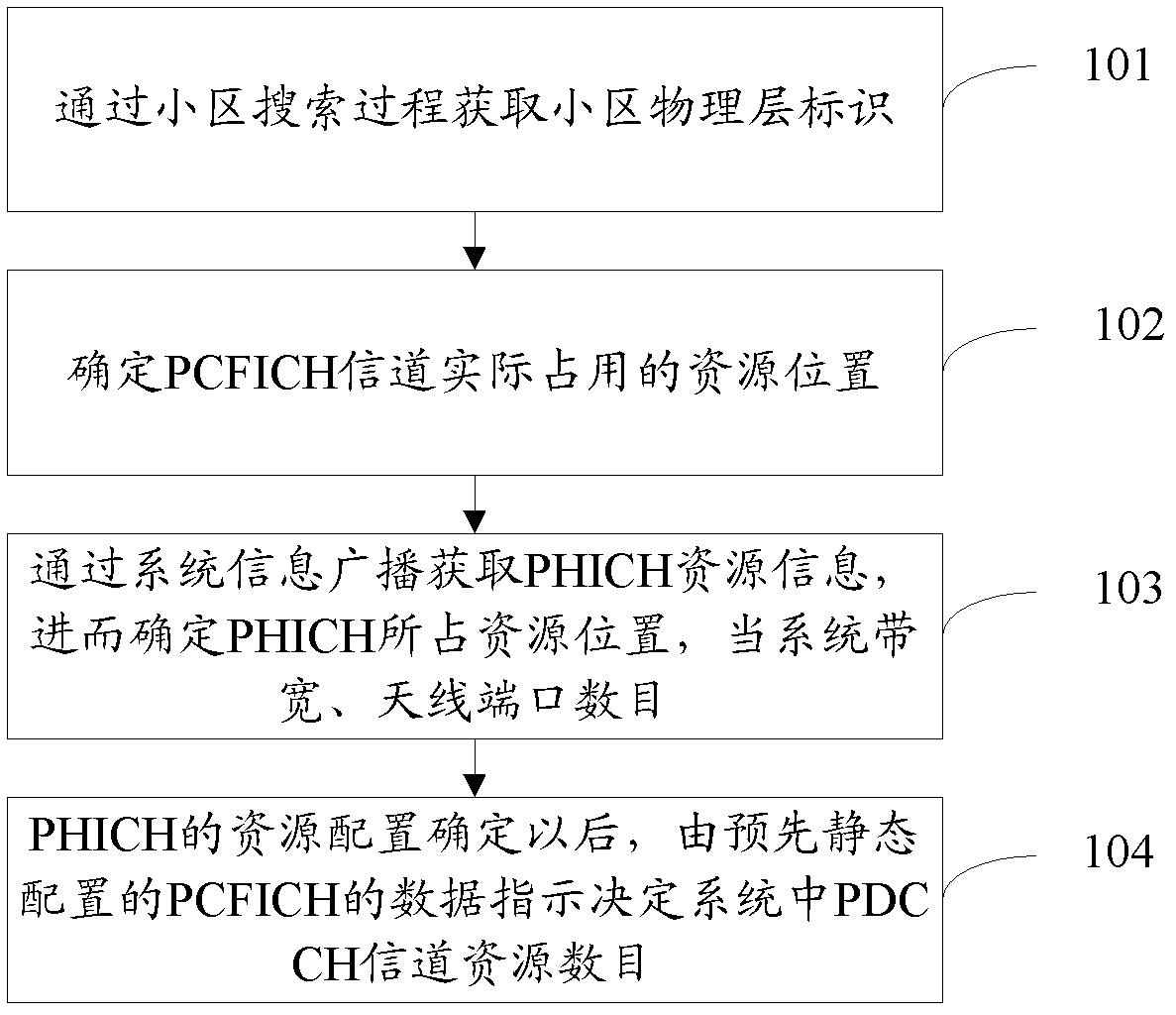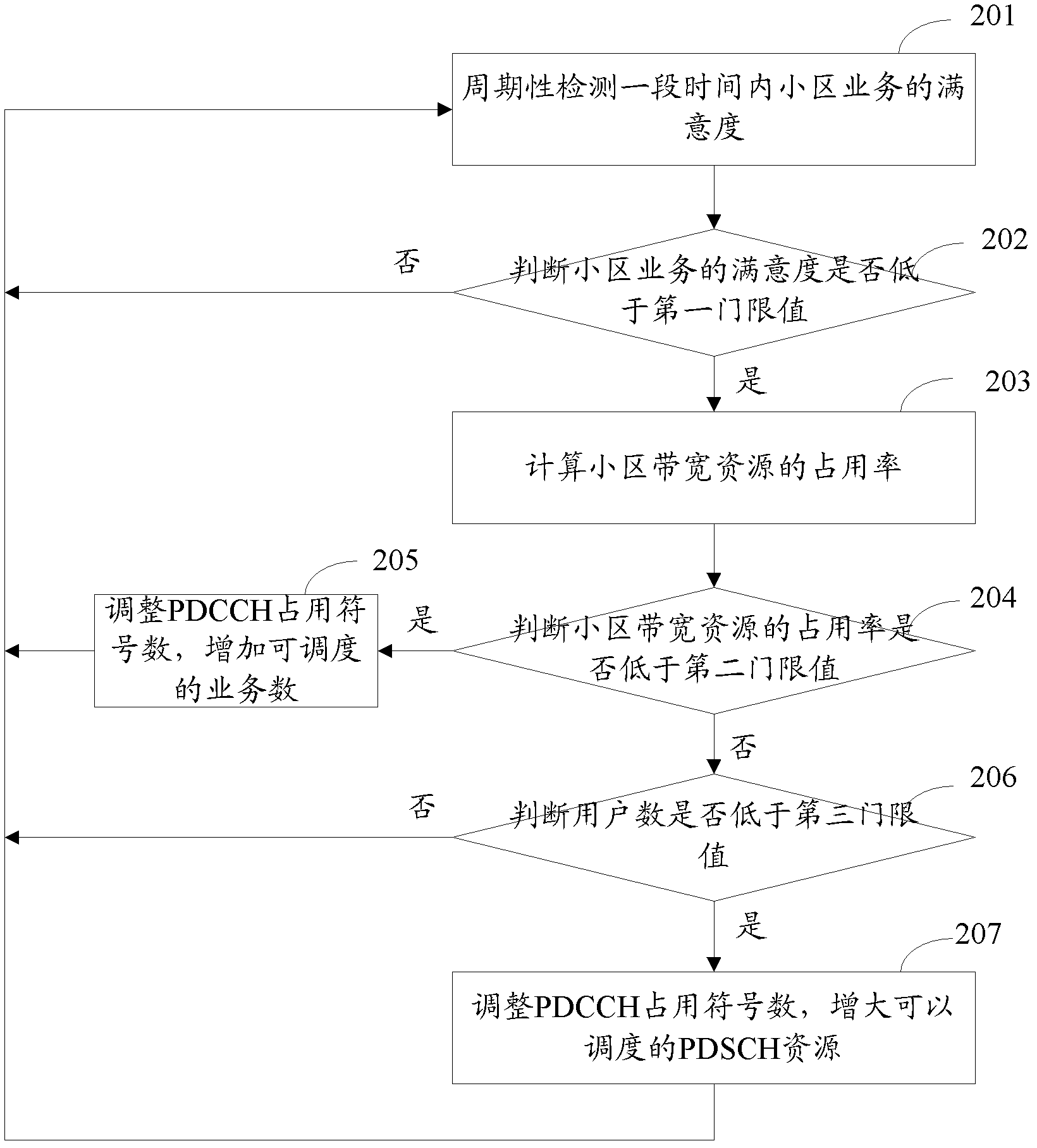Method for self-adaptive adjustment on symbol occupation amount of PDCCH (Physical Downlink Control Channel)
A technology of self-adaptive adjustment and number of symbols, applied in electrical components, wireless communication, etc., can solve problems such as decreased service satisfaction of cells, limited system capacity, and inability to adapt to dynamic changes in system load and service characteristics.
- Summary
- Abstract
- Description
- Claims
- Application Information
AI Technical Summary
Problems solved by technology
Method used
Image
Examples
specific Embodiment approach
[0051] Step 201-1, judging whether the detection period timer is overtime, if so, execute step 201-2, otherwise continue to execute step 201-1;
[0052] Step 201-2. Calculate the satisfaction Sat(i, t) of the service i in the cell to the service provided by the network in the current subframe t, and the value range is [0-1];
[0053] Step 201-3, judging whether i is equal to the current total business number N of the system services , if so, execute step 201-4, otherwise, set i=i+1, and return to step 201-2;
[0054] Step 201-4, calculate the satisfaction degree of the cell service according to the formula (1), wherein, N TTI is the duration of the detection cycle timer measured in the number of subframes.
[0055] Sat(i, t) of service i in subframe t can be defined in many ways, and two examples are given below:
[0056] For GBR services, the satisfaction Sat(i, t) of service i in subframe t is obtained by the ratio of the actual transmission rate of the service to the app...
PUM
 Login to View More
Login to View More Abstract
Description
Claims
Application Information
 Login to View More
Login to View More - R&D
- Intellectual Property
- Life Sciences
- Materials
- Tech Scout
- Unparalleled Data Quality
- Higher Quality Content
- 60% Fewer Hallucinations
Browse by: Latest US Patents, China's latest patents, Technical Efficacy Thesaurus, Application Domain, Technology Topic, Popular Technical Reports.
© 2025 PatSnap. All rights reserved.Legal|Privacy policy|Modern Slavery Act Transparency Statement|Sitemap|About US| Contact US: help@patsnap.com



